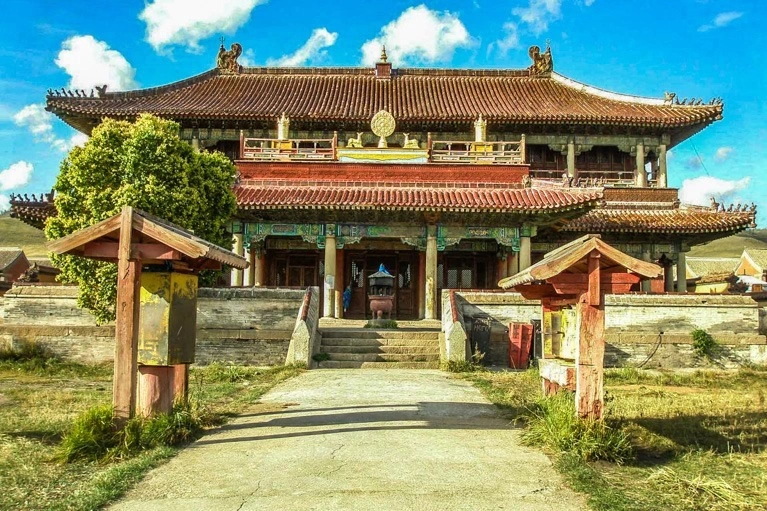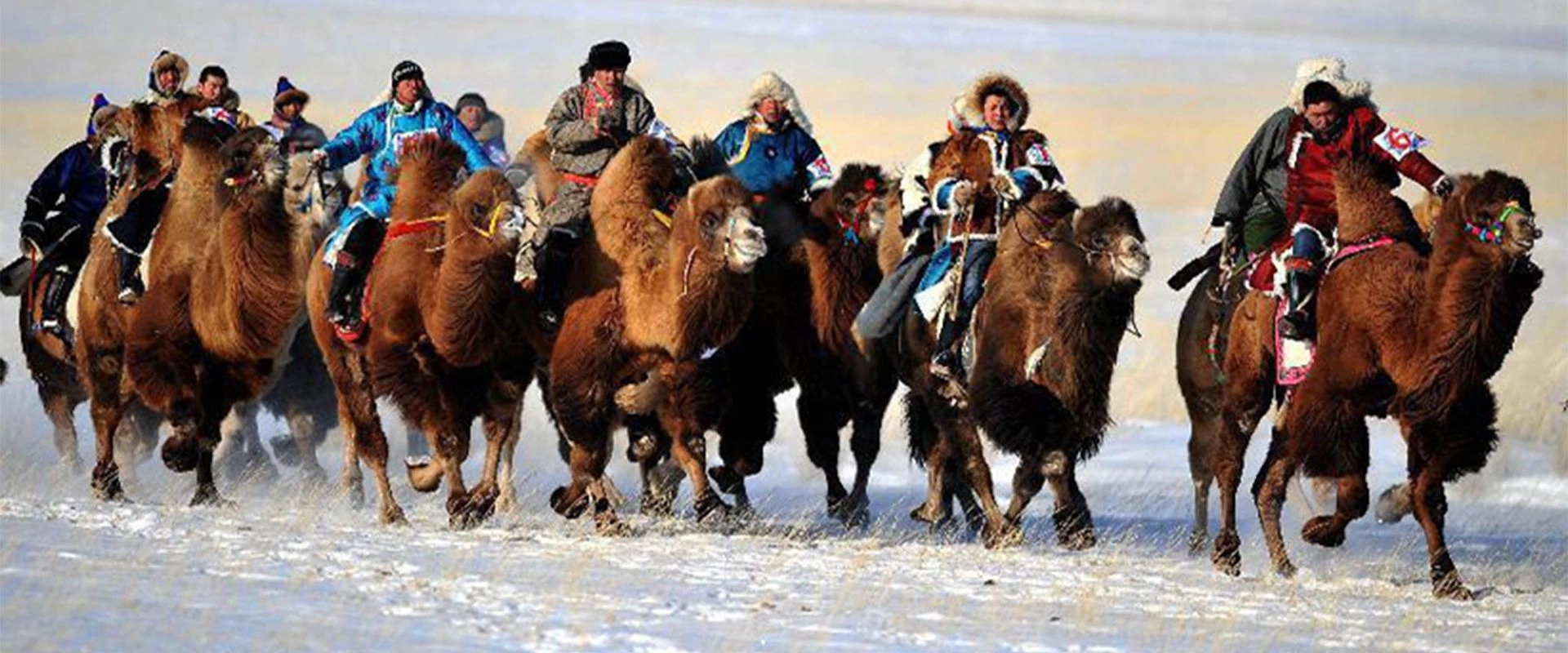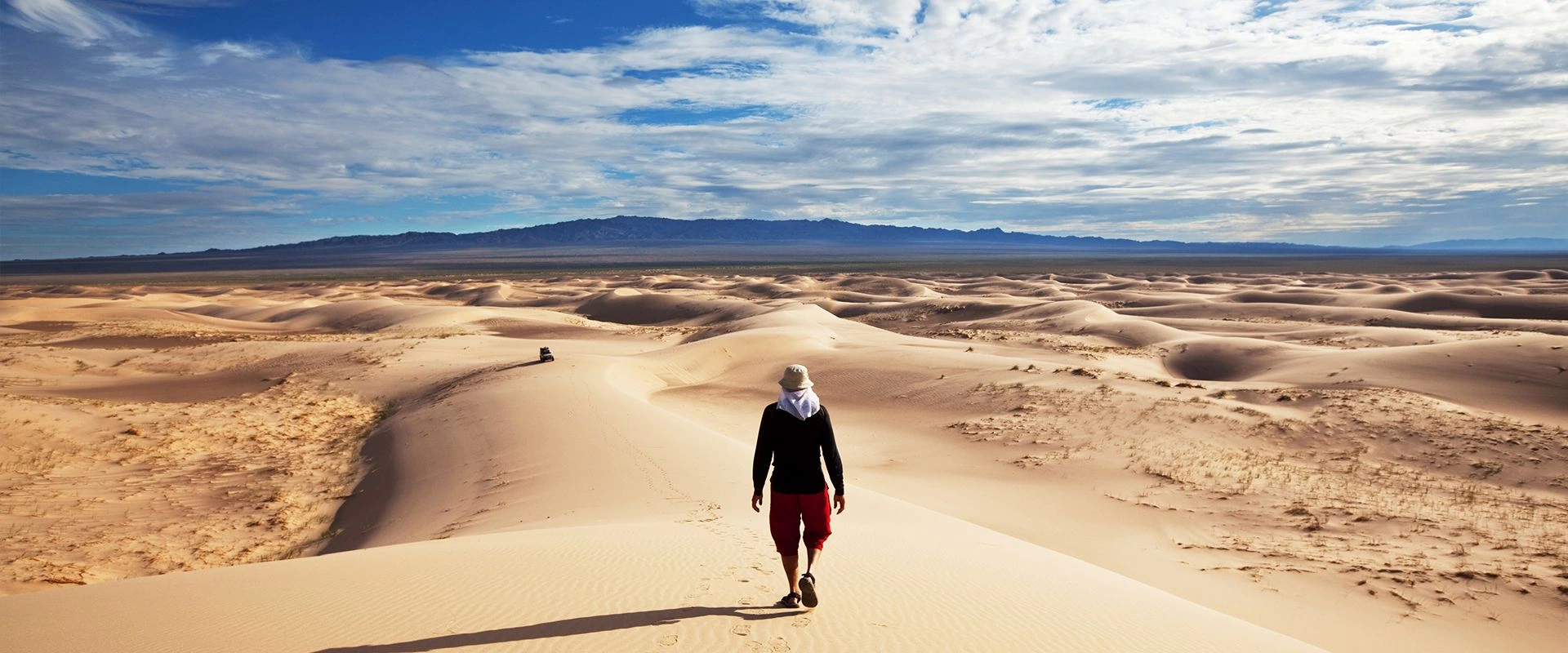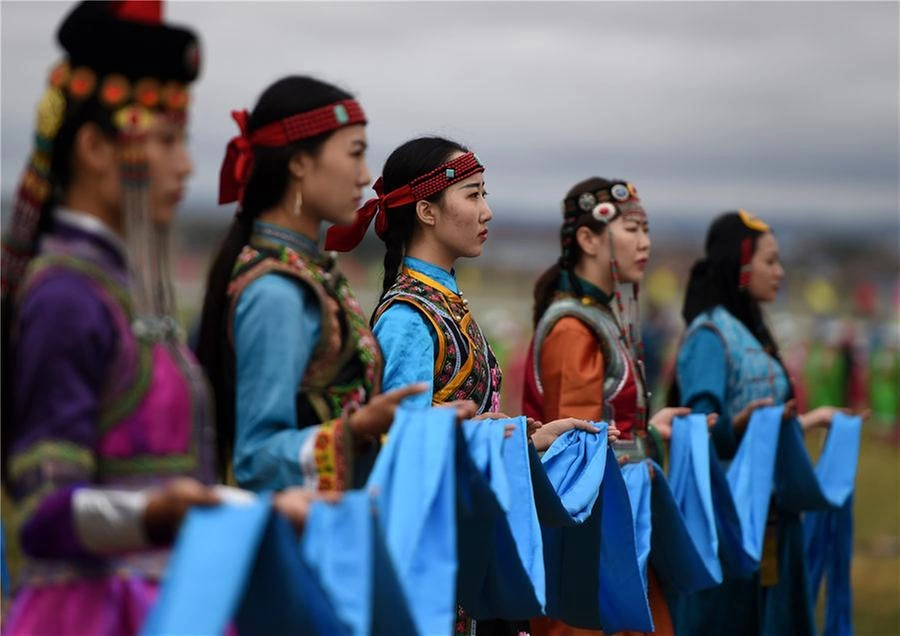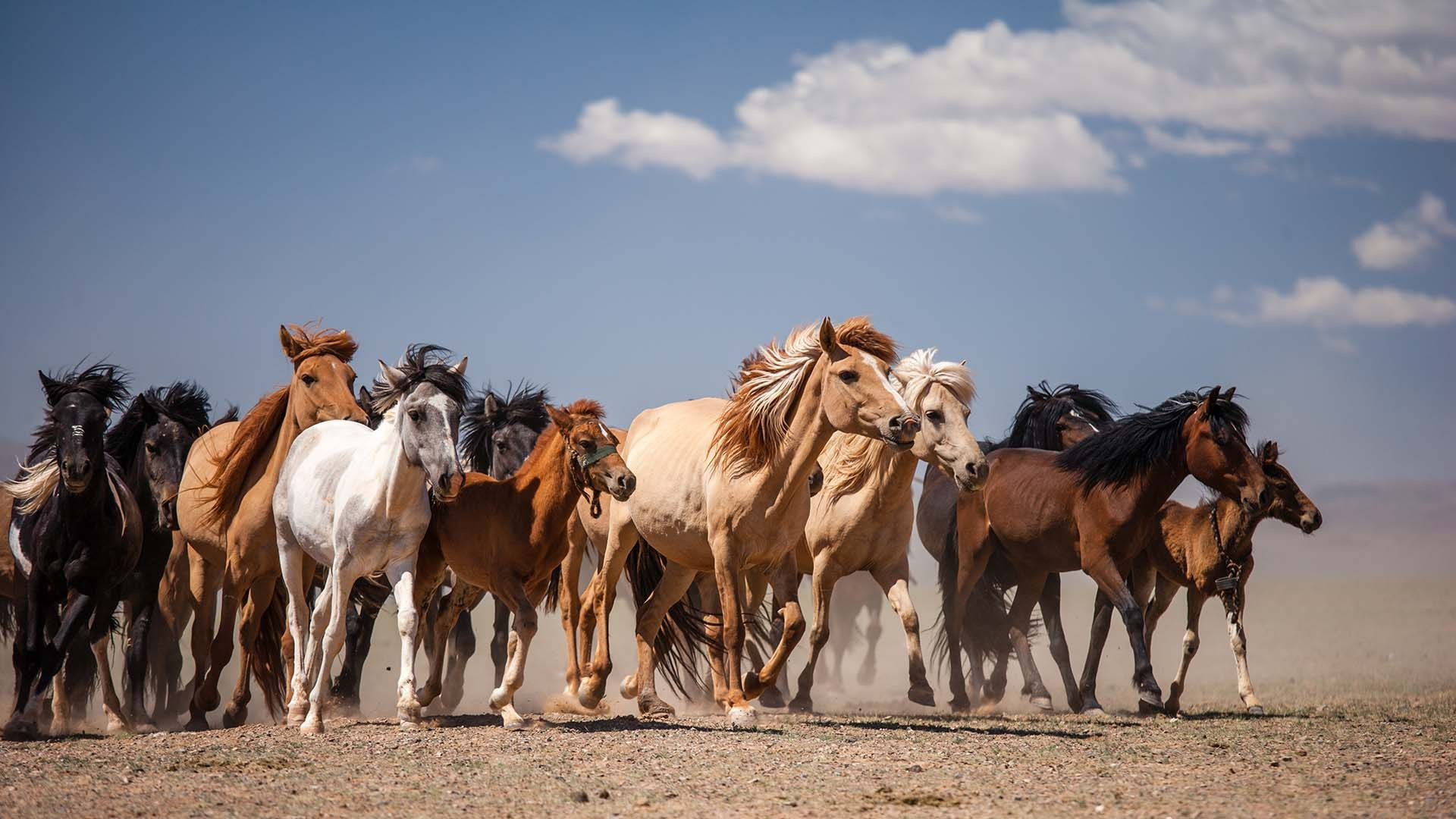
Popular dishes of Mongolia
Red food - Meat products
Meat is the basis of the diet, primarily beef and mutton. Mongolians eat more meat during the cold season and they have specific methods of preserving a meat. The most widespread one is air –drying or bortsloh. Beef is cut into long strips which are hung in the shade. The meat dries very quickly, becoming so hard that you can not cut it with the knife. Before using the dried meat it is powdered and the put into boiling water. In a minute you have a nourishing broth. The soldier of Mongol empire used to keep dried meat under their saddles and chew a piece of it as they rode along.
Horse meat is “of hot quality” and eaten only during the coldest period of winter. Mutton or sheep meat is mainly used in autumn and winter, and beef is perfect for conserving, thus mainly dried and used in spring. Goat meat is “of cold quality” and best for late spring or used for treatment of old or weak people. Fish is also beginning to be widely available.
One local speciality is Boodog- this is the whole carcass of a goat roasted from the inside the entrails and bones are taken out through the throat, the carcass is filled with burning hot stones and the neck tied tightly, and thus the goat is cooked from the inside to the outside.
Khorhog is prepared by cutting up the meat of the sheep and coat and placing it in a container together with hot stones, while heating from the outside. Some people add and fixed many kinds of vegetables also pepper and salt. Khorkhog was a cooking method commonly used by soldiers on military compaign in earlier centuries as the meat of a large animal such as a deer or gazella could thus be cooked in it's own stomach thus eliminating the need for carrying heavy pots or special utensils. Usually man are making Boodog and Khorhog.
White food - Milk products
Over the years, Mongolian nomads have developed a number of unique dairy products “white food” (tsagaan idee), which include different types of yoghurt (tarag, aarts), cottage cheesem (byaslag), dried curds(aarul ), and fermented mare’s milk (airag). Preferably, airag is is made in autumn after the animals have eaten their full of summer grasses. It may be further distilled to produce a mongolian vodka (shimiin arkhi) – best consumed when warm and fresh.
After a diet heavy on meat in winter, Mongolians have dairy products starting from late spring “to clean stomach” and dairy products are the main dish of Mongolians in summer. Summer is known as the “white season” and nomads work around the clock to process milk – turning it into cheese and variety of other dairy products to last them through the winter.
Out of this necessity Mongolians have found creative and ingenious ways to use the milk of all five livestock. Each of their milk quality and nourishment has been defined thoroughly in thousands of years experience and interestingly the way they use and process differ in each region, province and even family because of special weather, environment and traditions
The Green food – vegetable and plants
Herding the livestock and moving from pasture to another, Mongolians lived close to the nature, so that they have supplemented their protein diet with local herbs and greens when they could find, or grow them. In their food ingredients there were hundreds of kinds of wheat, plants, fruits, vegetables, mushrooms and nuts. Mongolia is becoming a nation of urban gardeners producing number of vegetables on their private plots, much to the surprice of foreign visitors who expect all Mongolians to be carnivores.
The Yellow food - butter and oil
The animals in Mongolia put on weight very easily in short period of time because of the long harsh weather after short summer. So called yellow food or fat and butter are widely consumed and are main ingredients of daily food especially in cold winter. The elder have sheep tail fat and yellow butter of milk, young people eat white nutritious butter and children dried clotted milk cream. The newborn suckles sheep tail which provides nutrition. The other yellow foods are milk cream (urum), butter (tos), melted butter(shar tos) etc... These are nourishing and nutritious and many ways to process and use for food and medical treatment.
The Black food – Water and distilled milk vodka
Being the treasure that brings life, water is considered to be the essence of drink for Mongolians. The traditional medicine uses water as medical treatment and developed different ways to use water for healing disease. The dews, rain or snow water are also highly valued and making a tea of it is an excellent way to heal cold or any internal disease. The black food includes home distilled milk vodka, which is not comparable with present Russian spirit vodka. Shimiin arkhi or Nermel vodka – vodka distilled from the yogurt, is one of the main alcoholic specialties, being the other airag- fermented mare’s milk. It is sweat and low grade, at home the vodka, warmed with butter, was a good treatment for elder or weak people. Mongolians never appreciated to drink vodka heavily and say that “when you are forty, you can taste it, when fifty, you can sip a bit, and when you are sixty, you can have some to enjoy”.
Below are basic info on traditional food and available foods:
Favorite meal Buuz – large dumplings made of dough, filled with meat, onion and garlic and steamed for 20 min. Buuz are widely served particularly in large quantities at Tsagaan sar, the Mongolian New year when people may prepare as many as 1000 dumplings for their guests.
Bansh- smaller version of buuz, it also may be boiled in a soup.
Khuushuur – large filled pocket, fried or deep fried
Supermarkets of Ulaanbaatar provide all sort of fresh food, vegetables and other products such as hamburger, smoked hammocks, sausages, hot dogs, canned salmon, canned crabmeat, fish and chicken.
Butter, yogurt, eggs, cheese and milk can be found anywhere. Locally produced milk and cream are not pasteurized, and must be boiled before drinking.
Vegetables are available, either locally or imported. Potatoes, cabbages, onions, garlic, tangerines, apples, cauliflower, radishes, beets, tomatoes, and cucumbers are available both in Ulaanbaatar and provincial towns.
Imported fruits and western beer, soft drinks, juices; different narks of western kofe and teas are available in supermarkets
Locally made bread and pasta may be available. Out in the countryside they may be non-existent.
Milk Tea
Mongolian tea is produced by adding a small quantity of tea leaves - typically from brick tea - to a pot of salted water, which is brought to a boil, whereupon a quantity of milk equivalent to about 1/3 the amount of water is added, and the tea is repeatedly scooped with a ladle and poured back into the pot so as mix the drink and allow it to foam. Milk tea is often mixed with rice, flour, clotted cream or even pieces of meat to give it more substance, or consumed accompanied by home-made “boortsog “ - fried biscuits.
The central role of tea in the traditional Mongolian diet provides clear evidence of the importance of the nomads' participation in international trade over many centuries. Indeed prior to the adoption of an official Mongolian currency in the early 20th century, commercial prices were commonly listed in units of brick tea

related pages in Mongolia Foods and Drinks


Recommended tours

Voluptas in eum praesentium. Occaecati sunt adipisci et.

